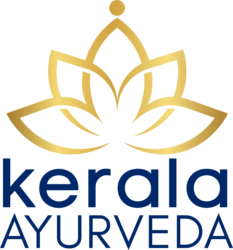Ayurvedic Clinical Specialist (ACS)
Courses > Ayurvedic Clinical Specialist (ACS) > Ayurvedic Clinical Specialist (ACS) Scope of Practice
Free informational webinar on demand
Meet our Enrollment Advisors and learn all the details of our AP program, from format to tuition.
Scope of Practice
The scope of practice for graduates of our level III Ayurvedic Clinical Specialist (ACS) is determined by the standards set by the National Ayurvedic Medical Association.
The ACS program is designed to train professionals of the highest caliber in Ayurveda for accomplishing the two goals of Ayurveda—Swasthasya Swasthya Rakshanam: to preserve the health of a healthy person, and Aturasya Vikara Prashamanam: to heal the imbalances of the sick. Students will gain the advanced Ayurvedic tools necessary to support healing of imbalances in the human mind-body systems and prevent future disease. These tools include a comprehensive nutritional education (Ahara), daily routines and practices to maximize health (Vihar), a clear understanding of the mind and thought processes (Vichara), plus their relationship to well-being, herbs and herbal formulation to facilitate healing, and personalized Ayurvedic detox and rejuvenation (Panchakarma and Rasayana) protocol.
The unique feature of this program is the specialty track to enable our Ayurvedic Clinical Specialists to specialize in their chosen clinical area of passion. Upon successful completion of the ACS course you will be awarded an Ayurvedic Clinical Specialist Certificate.
Ayurvedic Clinical Specialists can:
- Analyze mind-body constitution.
- Perform history taking.
- Assess the imbalances of Agni, Dosha, and Strotas based on the Ayurvedic Principles.
- Suggest food and lifestyle changes based on the Ayurvedic Constitution (Prakriti) and various imbalances in the mind/body systems (Vikriti).
- Suggest Ayurvedic herbs, spices and Ayurvedic herbal supplements based on the Ayurvedic Constitution (Prakriti) and various imbalances in the mind/body systems (Vikriti).
- Suggest Ayurvedic bodywork techniques based on the Ayurvedic Constitution (Prakriti) and
various imbalances in the mind/body systems (Vikriti). - Explain about Ayurvedic concepts (related to Prakriti, Vikriti, qualities, etc.).
- Explain the connection between Body and Mind and how diet and lifestyle, meditation, Pranayama, Ayurvedic herbs, Ayurvedic bodywork techniques and Yoga can help manage many
physical, mental and emotional problems. - Offer talks/write articles on various concepts on Ayurveda.
- Offer simple Ayurvedic bodywork techniques based on the Ayurvedic Constitution (Prakriti) and
various imbalances in the mind/body systems (Vikriti). - Offer cooking classes giving simple cooking tips.
Ayurvedic Clinical Specialists cannot:
- Diagnose diseases.
- Treat diseases.
- Prescribe treatments or medicines.
- Perform Panchakarma (unless allowed in your scope of practice under other licensing).
Please note: This scope of practice also applies to the level III program formerly titled the Ayurvedic Doctor (AD) certification.
